 By Bridget Hennessy A study from the Universities of Essex and Exeter has found that the sound of coral reefs dying can be heard, or really, harder to hear. These reefs are being impacted from overfishing and other human activity, causing them to actually be much quieter than the protected and healthy coral reefs in the same area. The study was performed by taking acoustic recordings of the coral reefs around the islands in the Philippines, and it revealed that the noise produced by the fish and crustaceans around unprotected, damaged reefs was only one third of the sound produced at protected coral reefs. There were significantly fewer remaining marine animals at the unprotected, damaged reefs than at the healthy ones. Though the human activity causing this is obviously dangerous to the coral reefs that supply nutrients to the marine life, it is especially harmful because the reef fish and invertebrates in the larval stages use the noise from coral reefs to orient themselves back to the reefs. When less sound is produced, the larvae are more unlikely to make it back to the reefs. This affects later generations and the population levels in the ocean and also pushes fish farther away from damaged coral reefs, as the fish dislike the smell of the unprotected reefs, which further decreases the likelihood of the reefs surviving. Article link: http://www.sciencedaily.com/releases/2014/12/141203083706.htm
0 Comments
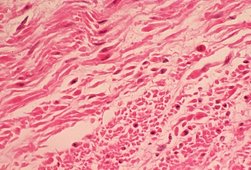 By Kaitlynn Bayne In a laboratory at Duke University, scientists have grown muscle that responds to external stimuli very similarly to human muscle. Although animal muscle has been created in labs before, this is the first lab to successfully make human muscle. They made the muscle from myogenic precursor cells, which are stem cells that are in a stage between the early stem cell and the muscle tissue stages. After a year of making this tissue, they tested it with external stimuli, and found that it responded the same way human muscle would. Also, the muscle responded to electrical signals, making it the first lab-grown muscle to do so. This is significant because it allows nerves to activate the muscle. The goal of the scientists in this lab is to come up with a way to create medications made specifically toward individual patients. In the lab, the muscle was able to respond to drugs the same way it responds in the human body. Therefore, if they could get myogenic precursor cells from a patient, they would be able to test different drugs on the lab-created muscle to determine which ones would be the best for the individual. This discovery has the potential to change the pharmaceutical and health care industries greatly. The ability to get medication made specifically for your own body would allow patients to skip the step of testing a bunch of medications before finding one that works. Additionally, since the medication would be tailored specifically for the individual, it also has the possibility to be much more effective than medications are today. Research: http://www.cnet.com/news/first-contracting-human-muscle-grown-in-a-lab/ 2/10/2015 0 Comments Anxiety Management By Ammara Virk The most common type of research done on anxiety seems to focus on what causes anxiety. For example, they may focus on environmental factors such as work-related stressors as a cause for anxiety. In such cases, they are focusing on processes that “turn on” anxiety. However, as is pointed out by the article “The biology of Anxious Temperament May Lie With a Problem in an Anxiety ‘Off Switch’”, an important aspect of anxiety to consider is that dysfunction could exist in an individual’s ability to deal effectively with and diminish anxiety after its onset. Researchers at the University of Madison suggest that a specific neuropeptide, neuropeptide Y, is the ‘off-switch’ and deficiency in this neuropeptide can lead to anxiety. Also note that these deficiencies were found in the central nucleus of the amygdala, a region of the brain that plays a very important role in fear, anxiety, and their regulation. These findings have important implications for treatment: for example, in instances where preventative therapy is not possible, this will allow researchers to focus on treatments “promoting recovery after stress.” This is very helpful as early onset of extreme anxiety (that is, during childhood) can lead to problems like depression and substance abuse later on in life. Source: http://www.sciencedaily.com/releases/2014/12/141202082133.htm 2/8/2015 1 Comment Brain Training: A Sham?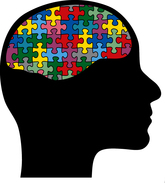 By Trishanya Raju Picture this: You’re tired after classes on Friday. You get home, toss your back pack to the side, plop yourself onto the couch with a bag of chips and turn on that T.V. A little while later, you turn to the clock, and see that it’s been 8 hours. You toss the remote and bag of chips to the side, disgusted with yourself. You want to make up for all the brain cells you probably just killed. But you don’t want to do homework. So what do you do instead? You play those brain-training games that you constantly see advertised. Don’t kid yourself; we’ve all been there. We’ve all tried Lumosity (or Cogmed, or BrainHQ) right? Or have at least thought about trying it, enticed by their promise that brain training can make you smarter. But is this too good to be true? Playing a couple of games, and becoming smarter just like that? Yes, according to the Stanford University Center on Longevity and the Berlin Max Planck Institute for Human Development. They say that there is no scientific evidence to back up this theory. The consistent conclusions from this kind of research are that when people practice one task, they get better at that it. This improvement might stretch to include some other, similar, tasks. Play a videogame, and you’ll get better at that game, and maybe similar ones (I mean come on, aren’t most warfare games are the same except for the graphics?). But you won’t get better at real-life tasks like driving a car, or designing a building. For a more detailed article about this, visit http://www.scientificamerican.com/article/brain-training-doesn-t-make-you-smarter/ The article mentions that one of the senior researchers in this study is the University of Michigan’s own John Jonides. 2/8/2015 0 Comments Deep-Earth Carbon Discoveries Reveal Details on Diamond Formation and the Origin of Life By Claire Wiggins Researchers at Johns Hopkins University have discovered new information about carbon below the Earth’s upper crust, which has implications for both how diamonds are formed in the mantle, and how life may have begun on Earth. Contrary to previous beliefs, not only methane and carbon dioxide occupy the subductions zones, but also a supply of different organic carbon species. This carbon could lead to the formation of diamonds and be a possible food source for thermophilic bacteria. Via a model developed by geochemist Dimitri Sverjensky, the amount and types of carbon 100 miles below the Earth’s surface were calculated for the first time. “It is a very exciting possibility that these deep fluids might transport building blocks for life into the shallow Earth,” explained Sverjensky, professor of Earth and Planetary Sciences at Johns Hopkins. “This may be a key to the origin of life itself.” The Deep Earth Water model has helped reveal that there is in fact a great deal of carbon species dissolved in deep earth fluids. This discovery could have implications for how carbon cycles through the earth and in the atmosphere. These carbon-fluids also present a previously unknown way for diamond formation to occur. This research “is a part of a 10-year global project to further understanding of carbon on Earth called the Deep Carbon Observatory. The work is funded by the Alfred P. Sloan Foundation.” Article Link: http://www.sciencedaily.com/releases/2014/11/141120183344.htm 2/8/2015 0 Comments Food: The New Addiction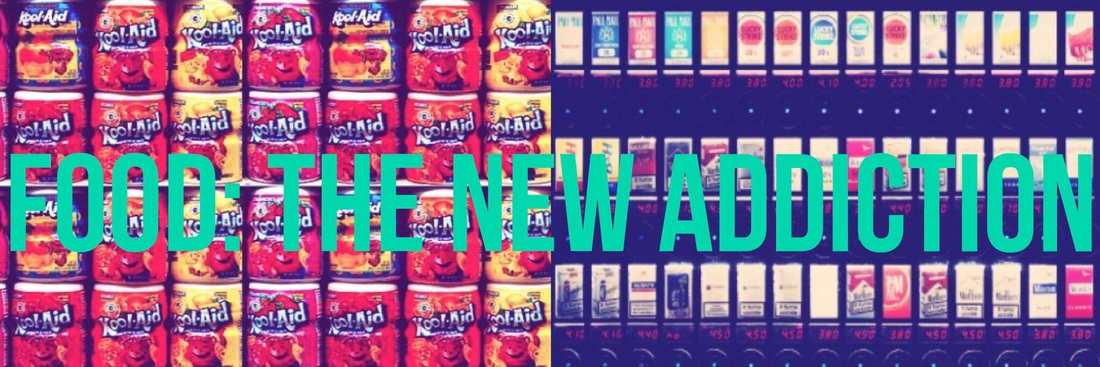 By Anna Cook Where there’s smoke, there’s fire. And where there’s tobacco, there’s now junk food… Many of us know that familiar commanding urge, guiding our thoughts towards anything high in fat, sugar, salt or calories. The kind of insatiable pining that differs greatly from normal hunger, and it will not yield, no matter how full you are. This insisting appetite can only be (temporarily) satisfied by Oreos, Capri Suns, Macaroni & Cheese, Nutter Butters, Chips Ahoy or anything on the Taco Bell menu. These foods have an incidental addictive quality comparative to cigarettes, but just how similar are addictive foods to addictive cigarettes? Phillip Morris and Kraft Foods, the Same? To start, not only are both the major US tobacco and junk food companies fundamentally the same entity, but they also utilize the same consumer-addiction fostering tactics. Phillip Morris Companies Inc. America’s leading cigarette manufacturer bought Kraft Foods Inc. in 1988. A purchase I believe to be a direct response to the “Tar Wars” and the passing of the Comprehensive Smoking Education Act of the 1980s. For the first time in American history, tobacco companies were facing harsh legislation and falling sales. Food: The new Addiction Phillip Morris Companies Inc. began to look for the next legal addiction they could get people hooked on and profit from. Reviewing documents from these companies correspondence revealed, “Kraft and Philip Morris discussed investing jointly in brain scans to study how the brain processes tastes and smells…and interest in brain science, including how the brain is rewarded by sweet and fatty foods” (1). This research is adamantly denied by the companies because it would imply their awareness of junk food’s addictive properties. In fact, many neuroscience studies indicated foods rich in fat, sugar and calories almost identically stimulate the brain the way cocaine does, causing addictive behavior. Documents released in tobacco liability suits show “a 1998 memo suggested that Kraft, Philip Morris and Miller Brewing, which were corporate siblings at the time, collaborate on foods and drinks ‘engineered to influence’ a customer's mood or sense of fullness” (1). Why does this Research Matter? These studies imply that Phillip Morris realized cigarette sales were headed for a devastating turn, invested in making junk food the next multibillion dollar industry and recognized the addictive properties of both tobacco and junk food before their consumers could. What’s the Point? Don’t get me wrong, I love a good salty, crunchy and oily snack just like the next blog writer, but it never occurred to me this behavior might be addictive. That through numerous advertisements, clever product display, and even scent engineering, my behavior and appetite has been exploited. That willingly, I have been trading in my money and well-being for someone else’s eager profit. I ask that you contemplate the ethical implications of your next junk food purchase, as many others have begun to do. In fact, and perhaps in response to this awareness, “On January 27, 2003, Philip Morris Companies Inc. changed its name to Altria Group, Inc. Even under this new name, Altria continues to own 100% of Philip Morris USA. Some view this name change as an effort by Altria to deemphasize its historical association with tobacco products” (2). We are certainly making progress towards transparency and food ethics…just be aware of how you’re being manipulated, before you drink the Kool-Aid. Sources: 1. http://authoritynutrition.com/big-food-is-much-worse-than-big-tobacco/ 2. http://en.wikipedia.org/wiki/Philip_Morris_International 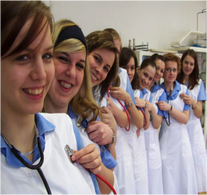 By Angie Miller Sympathetic? Observant? Enjoying interacting with people? Like helping others? Registered nurses are a branch within the health field. The growth for registered nurses in the next ten years is at a much faster than average growth of 21% or more. The median salary of a meteorologist in the United States is $65,950. From being the bridge between patients and doctors to providing and altering care, nurses are the glue that holds together our health-care system. Work environment for registered nurses is usually hectic and not set in stone. Home health and public health nurses must travel for their work. Nursing care facilities and hospitals provide 24-hour care, which means registered nurses may work nights, weekends, and holidays. Often registered nurses are subject to standing, walking, and being on their feet for long periods of time. Generally registered nurses monitor and update records for patients, interpret diagnostic tests, alter treatment plans, as well as assessing individual and patient needs. Education for registered nurses is really wide variety from natural sciences, mathematics, English, and language. Registered nurses are usually required to have an Associate’s degree, a Bachelor’s degree, or a diploma from a nursing program. In addition to a degree, registered nurses must pass an examination to become a licensed nurse. Personality skills that are important for registered nurses include caring, compassionate, detail-oriented, and exceptional communication skills. Similar careers to registered nurses are critical care nurse, pediatric emergency room nurse, and ambulance nurse. Article link: http://www.sciencebuddies.org/science-engineering-careers/health/registered-nurse#keyfactsinformation 2/3/2015 0 Comments Genetics & Healthcare By Saara Mohammed This semester I’m taking a microbial genetics class, and it’s gotten me more and more interested in the future of genetics for us humans: the increased ease of DNA sequencing, and what it will mean for our lives- health related as well as social. Genomics is a subset of genetics in which recombinant DNA, DNA sequencing, and bioinformatics sequence, analyze, and assemble the structure of genomes (1). The size of a genome, or all the genetic material of an organism, doesn’t depend on the physical size or complexity of the organism. For example, the amoeba genome is 200 times our 3-billion-base genome (2). The exon, or part of the genome that actually codes for proteins, could be sequenced individually, and only makes up 2% of the entire genome. We’re already seeing the effects of the ease of sequencing on our ability to trace our family line and determine which genes we may need to pay attention to. Services like 23 and Me, a company that sells DNA tests for $99 for you to trace your genealogy. When you click over to their website, you see invitations to sequence your genome as a new year’s resolution: “Learn more about yourself this new year” (3). According to an article in the Wall Street Journal in 2012, 23andme “has the largest autosomal DNA database, with more than 180,000 people” (4). Your results can reveal whether you carry mutations for 100s of rare genetic diseases, and your risk of common diseases. But for health care as a whole, there are new questions to consider. Those who get the test results must be ready to find out about diseases you may have or alleles you may carry for diseases that may be past down to your children. And then there is the problem of how much and when to reveal the information to children, which can change their approach to their health in important ways. I’ll explore genomics and the implications for health care and society in my posts this semester. References: 1. National Human Genome Research Institute (2010-11-08). "A Brief Guide to Genomics". Genome.gov. Retrieved 2011-12-03. 2. McCarthy, Jeanette. "In My Genes." Genomics 2014: 10-12. 3. https://www.23andme.com 4. Tergesen, Anne. "Finding a Few Hundred Cousins." WSJ. The Wall Street Journal, 12 Dec. 2012. Web. 10 Jan. 2015. 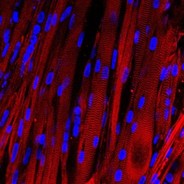 By Claire Wiggins Scientists at Duke have successfully produced live muscle cells, the first of their kind in the research world. Although muscle cell culture is frequently used experimentally, these human muscle cells respond to electrical impulses, drugs, and other forms of biochemical signaling just like muscles cells in a living organism. These muscle cells contract and respond to the outside stimuli in a way more similar to natural muscle cells than ever before. The main use of this lab-generated muscle tissue is to serve as a guinea pig for developing drugs as opposed to living beings. "The beauty of this work is that it can serve as a test bed for clinical trials in a dish," explained Dr. Nenad Bursac, professor of biomedical engineering at Duke. "We are working to test drugs' efficacy and safety without jeopardizing a patient's health and also to reproduce the functional and biochemical signals of diseases, especially rare ones and those that make taking muscle biopsies difficult." Bursac and his associates have made a huge stride towards personalized medicine. Perhaps in the future, patients will be able to supply some myogenic precursor cells, or cells that are past the stem cell stage but have yet to have developed into muscle tissue, and allow doctors or scientists to grow these cells on a 3D scaffold supplied with nutrients. This way, treatments could be tested on the laboratory-grown cells until the best treatment method is determined for that individual. Article Link: http://www.sciencedaily.com/releases/2015/01/150113154025.htm |
WELCOME, UMICH SCIENTISTAS!
CAMPUS PICS
WHAT'S NEWUPCOMING EVENTSPAST POSTS
October 2022
SORT BY TAG |
The Scientista Foundation, Inc. All Rights Reserved © 2011-2021 | Based in NY | contact@scientistafoundation.org
The Network for Pre-Professional Women in Science and Engineering
The Scientista Foundation is a registered 501(c)(3) -- Donate!
The Network for Pre-Professional Women in Science and Engineering
The Scientista Foundation is a registered 501(c)(3) -- Donate!


 RSS Feed
RSS Feed